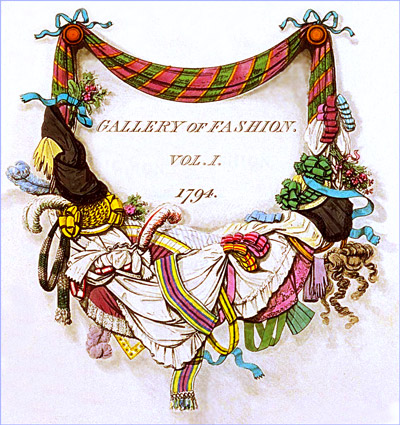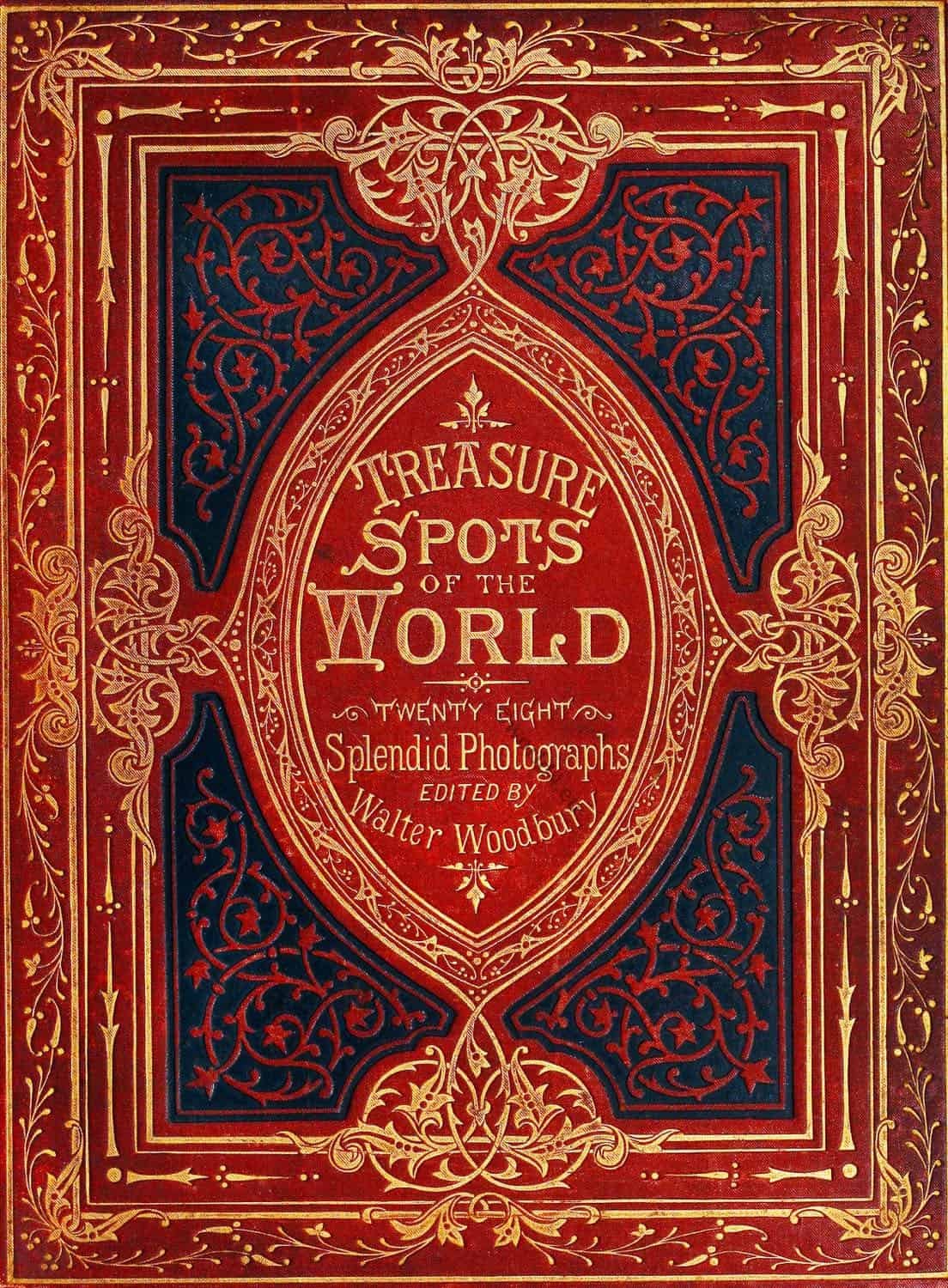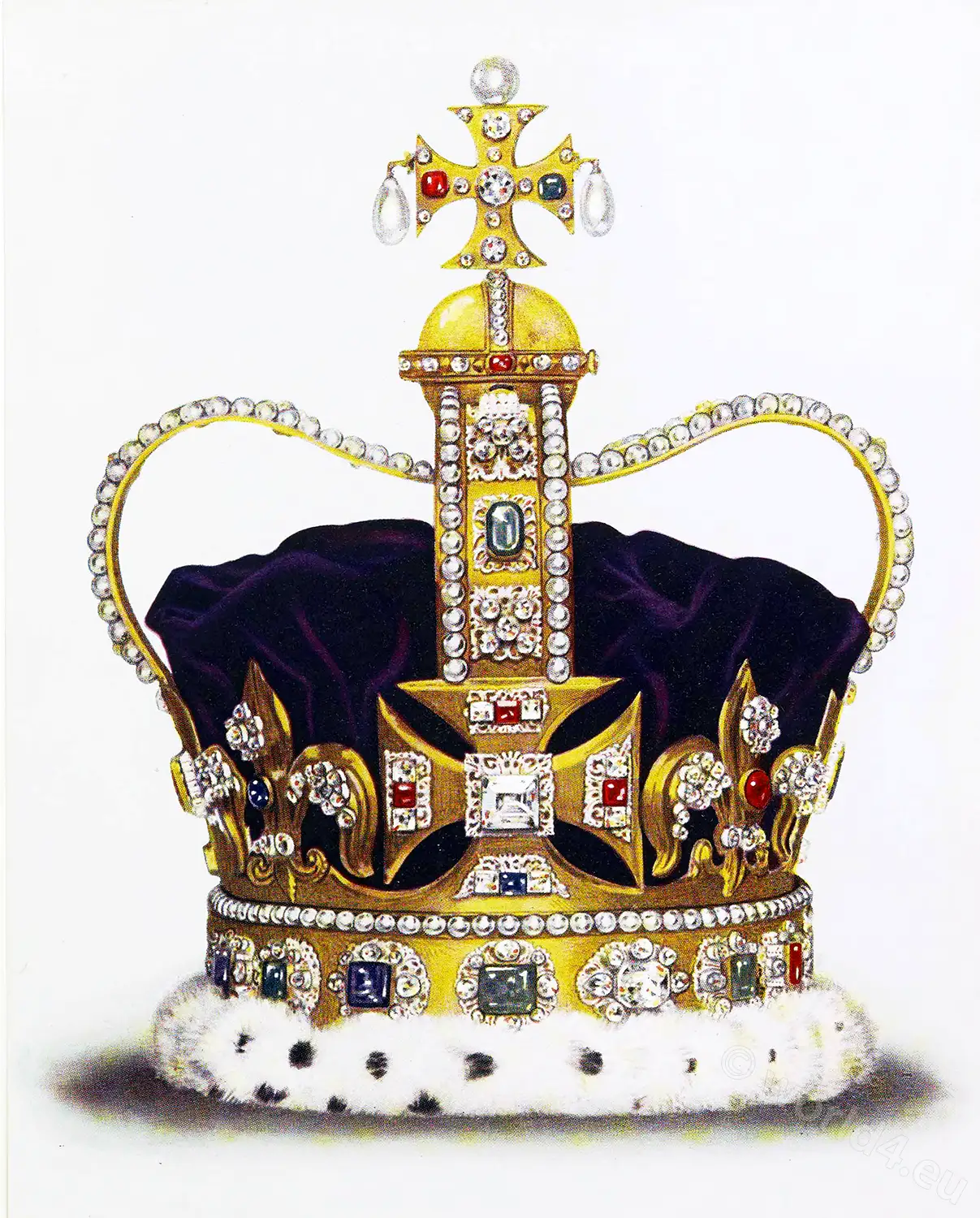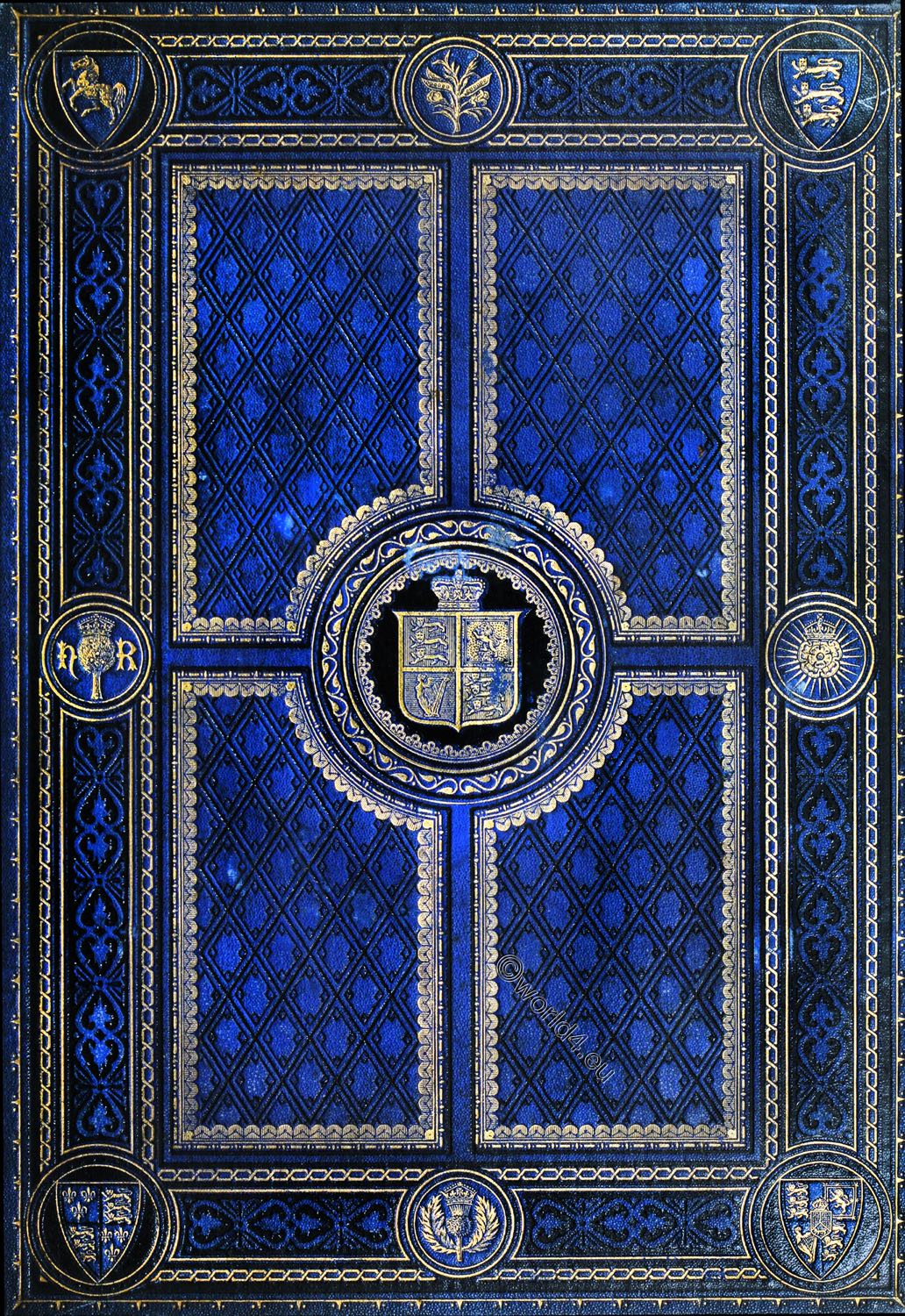
Pictures And Royal Portraits Illustrative Of English And Scottish History, From The Introduction Of Christianity To The Present Time: Engraved From Important Works By Distinguished Modern Painters, And From Authentic State Portraits. With Descriptive Historical Sketches. Author: Thomas Archer. Published in London, 1878 by Blackie & Son.
LIST OF THE PLATES, WITH NOTES ON THE ORIGINAL PICTURES AFTER WHICH THEY ARE ENGRAVED.
VOLUME FIRST.
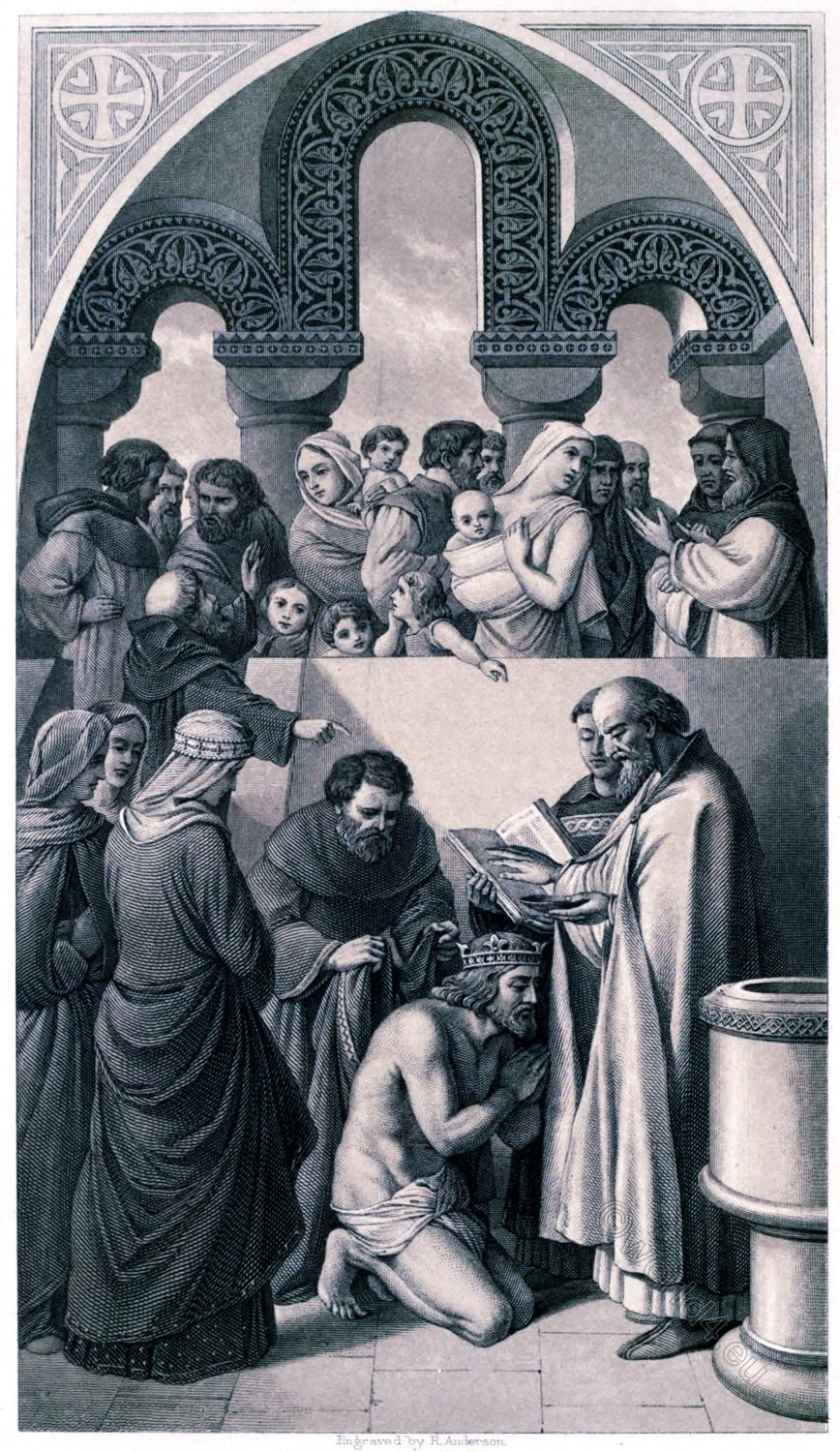
THE BAPTISM OF ETHELBERT, KING OF KENT.
The original picture is a fresco painted by W. Dyce, R.A., in the year 1846, on the south wall of the House of Lords over the throne. It was the first of the frescoes executed in the House of Lords by order of the Royal Commissioners. The picture is 16 feet 9 inches high, and 8 feet 11½ inches wide.
CELTIC RELICS.
The original is a drawing made for this work by J. L. Williams in the year 1871. The larger number of the relics are drawn from the objects themselves in various museums and private collections.
THE FIRST PREACHING OF CHRISTIANITY IN BRITAIN.
The original is a drawing by C. W. Cope, R.A., executed in the year 1858, and now preserved in the South Kensington Museum. The drawing is 21 inches wide, and 15 inches high.
ANGLO-SAXON RELICS.
Anglo-Saxon relics. Personal ornaments of gold and bronze. The original is a drawing made for this work by J. L. Williams in the year 1871. The relics are drawn from the objects themselves in various museums and private collections.
KING ALFRED INCITING THE ANGLO-SAXONS TO REPEL THE DANES, A. D. 876.
The original picture is a cartoon executed by G. F. Watts, R.A., and first exhibited in the year 1847 at the great competition in Westminster Hall, instituted by the Commissioners for the Decoration of the Houses of Parliament, and presided over by the late Prince Albert. The Commissioners awarded the painter a premium of £500, and purchased the cartoon, which now hangs in one of the committee rooms of the Houses of Parliament. It measures 11 feet 3 inches high, and 19 feet ¼ inch long.
THE CORONATION OF HAROLD.
The original drawing is one of a series of 42 designs by D. Maclise, R.A., illustrative of the Norman Conquest. The drawings were first exhibited at the Royal Academy in the year 1857, and have been engraved for the Art-Union of London.
RELICS ASSOCIATED WITH THOMAS BECKET.
Thomas Becket (1118-1170), English churchman, saint and martyr, 1493.
The original is a drawing made for this work by J. L. Williams in the year 1870. The relics are drawn from the objects themselves in various museums and private collections.
RICHARD COEUR DE LION FORGIVING BERTRAND DE GURDUN.
The original picture, painted by John Cross, was first exhibited in 1847 at the great competition in Westminster Hall, instituted by the Commissioners for the decoration of the Houses of Parliament. After gaining the prize of £300, it was purchased for the nation, and is now in one of the committee rooms of the Houses of Parliament. It measures 13 feet 9½ inches in length, and 10 feet 4½ inches in height.
THE SEIZURE OF ROGER DE MORTIMER BY EDWARD III.
The original picture is a cartoon executed by Sir J. Noel Paton, R.S.A., in the year 1845-6,in competition for an important prize offered by the Art-Union of London. It was exhibited at the Royal Scottish Academy in 1847. Its size is 7 feet long, and 5 feet high.
WYCLIFFE ON HIS SICK-BED ASSAILED BY THE FRIARS.
The original picture is a drawing in water colours, painted by George H. Thomas, in 1854, for the publishers of this work, and is still in their possession. Its size is 10¾ inches long, and 7 inches high.
LORD SAVE AND SELE BROUGHT BEFORE JACK CADE.
The original picture, painted by Charles Lucy for the present Lord Saye and Sele, was first exhibited at the Royal Academy in 1860, and again in the Great International Exhibition at South Kensington in 1862. The picture occupies the end of the great drawingroom in Broughton Castle, Oxfordshire. It is 14 feet long, and 10 feet 8 inches high.
THE INTRODUCTION OF THE ART OF PRINTING.
The original picture, painted by E. H. Wehnert, was first exhibited at the Gallery of the New Society of Painters in Water Colours (now the Institute of Painters in Water Colours) in the year 1850; and again at the Art Treasures Exhibition in Manchester in 1857.
THE SONS OF EDWARD IV. PARTED FROM THEIR MOTHER.
The original picture was painted by Gosse, a distinguished artist of the French School, about the year 1838. It is a picture of large size.
PORTRAIT OF HENRY VII.
This engraving is from one of the series of portraits of the Tudor sovereigns, painted by order of the Royal Commissioners in the Prince’s Chamber of the Palace of Westminster. The picture is 5 feet 11½ inches high, and 3 feet ½ inches wide.
PORTRAIT OF HENRY VIII.
This engraving is from one of the series of portraits of the Tudor sovereigns, painted by order of the Royal Commissioners in the Prince’s Chamber of the Palace of Westminster. The picture is 5 feet 11½ inches high, and 3 feet ½ inches wide.
SIR THOMAS MORE AND HIS DAUGHTER IN THE PRISON.
The original picture, painted by J. R. Herbert, R.A., was first exhibited at the Royal Academy in 1844. It is now in the National Gallery Vernon Collection. It measures 3 feet 7½ inches in width, by 2 feet 9½ inches in height.
PORTRAIT OF EDWARD VI.
This engraving is from one of the series of portraits of the Tudor sovereigns, painted by order of the Royal Commissioners in the Prince’s Chamber of the Palace of Westminster. The picture is 5 feet 11½ inches high, and 2 feet 7 inches wide.
PORTRAIT OF QUEEN MARY.
This engraving is from one of the series of portraits of the Tudor sovereigns, painted by order of the Royal Commissioners in the Prince’s Chamber of the Palace of West- minster. The picture is 5 feet 11½ inches high, and 2 feet 6¼ inches wide.
LADY JANE GREY’S RELUCTANCE TO ACCEPT THE CROWN.
The original picture, painted by C. R. Leslie, R.A., was first exhibited at the Royal Academy in 1827. It is now in the collection of his Grace the Duke of Bedford, at Woburn Abbey. Its size is 4 feet 4¾ inches in width, by 3 feet 3¾ inches in height.
PORTRAIT OF QUEEN ELIZABETH.
This engraving is from one of the series of portraits of Tudor sovereigns, painted by order of the Royal Commissioners in the Prince’s Chamber of the Palace of Westminster. The picture is 5 feet 11½ inches high, and 2 feet 5¾ inches wide.
RELICS ASSOCIATED WITH QUEEN ELIZABETH.
The original is a drawing made for this work by J. L. Williams in the year 1875. The relics are drawn from the objects themselves in various museums and private collections.
QUEEN ELIZABETH KNIGHTING ADMIRAL DRAKE.
The original drawing by John Gilbert (now Sir John Gilbert, R.A.) was executed in the year 1861. Its size is 13⅜ inches in width, by 9¼ inches in height.
MARY QUEEN OF SCOTS COMPELLED TO SIGN HER ABDICATION.
The original picture, painted by Sir William Allan, R.A., P. R.S.A., was first exhibited at the Royal Academy in 1824, and afterwards at the Royal Institution for the Encouragement of the Fine Arts in Scotland in 1827. It is a picture of large size.
PORTRAIT OF JAMES I.
This engraving is from a drawing made by J. L. Williams in the year 1871, after contemporary prints by Pass and C.Vischer. The back-ground is from richly-embroidered hangings at Knole in Kent, the border is adapted from carvings of the period in South Kensington Museum. The heraldic devices are from “Willement’s Regal Heraldry.”
DEPARTURE OF THE PILGRIM FATHERS FROM DELFTHAVEN.
The original picture is a fresco painted by C. W. Cope, R. A., on the wall of the Peers’ Corridor of the Houses of Parliament, in the year 1856. It is 9 feet 2 inches wide, and 7 feet ⅔ inch high.
THE GUNPOWDER PLOT GUY FAWKES INTERROGATED BY JAMES I.
The original is a drawing made for this work by J. M’L. Ralston in the year 1875. It is in possession of the publishers.
PORTRAIT OF CHARLES I.
This engraving is from the picture by Vandyke. The back-ground is from silk damask of the I7th cent, in South Kensington Museum, and the border from tapestry of the early part of the 17th cent. from the Palace at Newmarket.
OPENING SCENE OF THE GREAT CIVIL WAR CHARLES I. RAISING HIS STANDARD.
The original picture is a fresco painted by C. W. Cope, R.A., on the wall of the Peers’ Corridor of the Houses of Parliament, in the year 1861. It is 9 feet 2 inches long, and 7 feet ½ inch high.
CROMWELL AT BATTLE OF MARSTON MOOR.
The original picture, painted by Abraham Cooper, R.A., was first exhibited at the Royal Academy in the year 1863.
CHARLES I. IN THE GUARD-ROOM.
The original picture, painted by Paul Delaroche, in the year 1838, is one of the noblest works of the artist. It was purchased by Lord Francis Egerton, and is now in the Bridgewater Gallery. Its size is 12 feet 6 inches wide, by 10 feet high.
PORTRAIT OF OLIVER CROMWELL.
This engraving is from a drawing made by J. L. Williams in the year 1871, the head from the fine miniature by Cooper, the figure from a contemporary print by Walker. The back-ground is from a piece of embroidery dated 1650, the border from panelling of the early part of the 17th century in South Kensington Museum. The Mottoes are those used by the Commonwealth, and by Cromwell when Lord Protector.
THE MARQUIS OF MONTROSE AT THE PLACE OF EXECUTION.
The original picture is a fresco painted by E. M. Ward, R.A., on the wall of the Commons’ Corridor of the Houses of Parliament, in the year 1857. It is 7 feet 7 inches wide, by 6 feet 8 inches high.
CHARLES II. IN DISGUISE, AIDED IN HIS ESCAPE BY JANE LANE.
The original picture is a fresco painted by E. M. Ward, R.A., on the wall of the Commons’ Corridor of the Houses of Parliament, in the year 1864. It is 7 feet 7¼ inches wide, by 6 feet 8 inches high.


